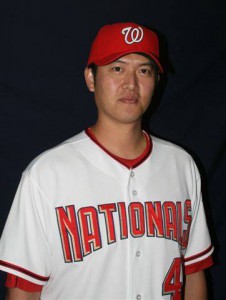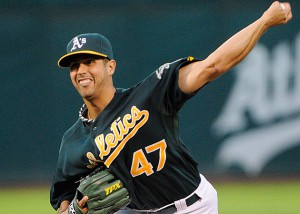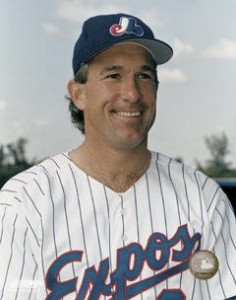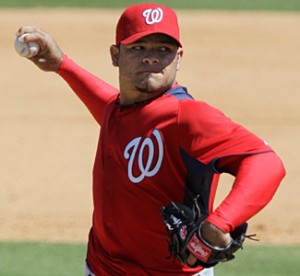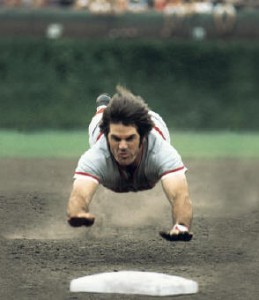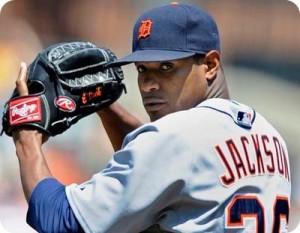
Braun eloquently defended himself but left out a key part of the story that would have changed a lot of opinions. Photo Norm Hall/Getty Images via bleacherreport.com
(editor’s note: I updated and clarified two points in this post on 2/29/12 at 14:00 after receiving feedback from Will Carroll; apologies for misrepresentation. He does not work for Baseball Prospectus and Braun’s testosterone RATIOs were elevated, not his testosterone levels).
I suppose I have to put my 2 cents in on Ryan Braun.
Here’s what I think; I’m less concerned about the fact that Braun got off on a supposed technicality (though that opinion has now changed given the information discussed further down below) than I am about the breaches in the process. He suffered a career-damaging leak during what was supposed to be a confidential process and to that I say, shame on whoever leaked the information and double shame on ESPN for their TMZ-style reporting on the matter. You want to be so cavalier with a person’s life and credibility? I say you should be 100% culpable to your divulgions and should face financial punishment when Braun inevitably sues you for your leaks (as he has said he will do).
My view on drug testing and these self-appointed anti-doping organizations is incredibly skeptical; much like the NCAA, they self-aggrandize and preach about how they’re trying to keep sports clean, but then don’t acknowledge the irreversable damage done to athletes reputations when false positives, confidential leaks, and mistakes in the process come about. Braun’s test was supposedly 10 times higher than what had EVER been measured before in baseball testing, and he had tested clean dozens of times before; why isn’t anyone talking about these two points together and asking the question, “gee, maybe something was actually wrong in this case?” Why is everyone focused on how Braun “beat the system” but not questioning why, as he’s pointed out, he didn’t change his performance, didn’t gain a pound, and tested clean dozens of times previously? Testing organizations TRY to find people who are cheating because it validates their existences, and when questionable evidence or results arise, instead of looking at things dispassionately they will always take the viewpoint that best supports their corporate missions.
This is related to my problems with the ongoing witch hunts surrounding Lance Armstrong as well; you have banned and proven liars in Tyler Hamilton and Floyd Landis who conveniently claim that Armstrong has cheated, yet you have Armstrong’s body of literally hundreds and hundreds of clean tests with absolutely no evidence of any positive test, ever. At some point I’ve just kinda said, “Enough.” Come to me with incontrovertable proof of a positive test or stop talking. Interviews and “he said, she said” evidence is just that; hearsay.
(Note that the collector has released a statement describing what he did that fateful night and it sounds like he did nothing out of the norm, but his admittance that he stored the samples “in his basement” as opposed to a refrigerator certainly gave me pause).
We’re also seeing ridiculous theories on why the appeal was successful. Deadspin is reporting that the arbitrator purposely blew the appeal to keep getting work (if i’m reading the article right). I’ve read a theory that somehow Selig engineered this because of his relationship with Milwaukee. I guess in the absence of anything besides what we learned from MLB’s ridiculous statement (saying they were “incredibly disappointed” in the arbitration finding seems to be unneccesarily vindictive) and Braun’s attack on the process (which also seemed over-stated; I don’t think its “fatally flawed,” just poorly worded), we’re left to our own imagination.
Now, that rant being said, check out this link at Hardballtimes from writer Mat Kovach. Apparently, Braun’s lawyers decided to see what would happen to Braun’s urine if they repeated the exact same scenario that led to the positive test … and after replicating the 3-day storage conditions before the samples were FedEx’d they found that a different urine sample showed the same elevated testosterone ratio levels! I think a LOT of the outrage over Braun would disappear if this fact was more widely known. In fact, frankly if this IS the case i’m not sure why Braun’s camp isn’t leading with this fact. The narrative behind this story would go from “he got off on a technicality” to being “he got off because his sample was tainted” in a hurry.
Other sources on this topic include this link at Chad Moriyama‘s blog but apparently the person who really discovered this is Will Carroll. Carroll has published a Kindle-reader story for 0.99 on Amazon and, well, its worth the 99 cent fee to buy and read (proceeds go to the Jimmy V fund). You don’t need a Kindle reader; if you buy it right now you can read it via Kindle’s “cloud reader.” For any of you who still have doubts on the case, you MUST read this story.
In fact, I’m still amazed that Carroll’s findings aren’t more well known. The kindle article says that Carroll wrote it on behalf of si.com, so perhaps this is a future Sports Illustrated article (either in print or online or both). I hope so; this story needs to have more traction. To any the holier-than-thou baseball columnist or blogger stating that they “still think Braun is guilty,” I say simply, “read this article.” To me its 100% incontrovertable proof that Braun’s sample was clean and that the conditions of its handling led to the positive test.
I just wish this was part of the narrative, instead of the tired “he beat the system” reporting that has dominated the story.
(Post-story update: Apparently Braun’s sample contained Synthetic Testosterone at advanced levels. This particular fact puts a different spin on the entire defense of Braun above, honestly. I’m less inclined now to defend the process and more at odds with the synthetic positive test. That’s unfortunate.)
